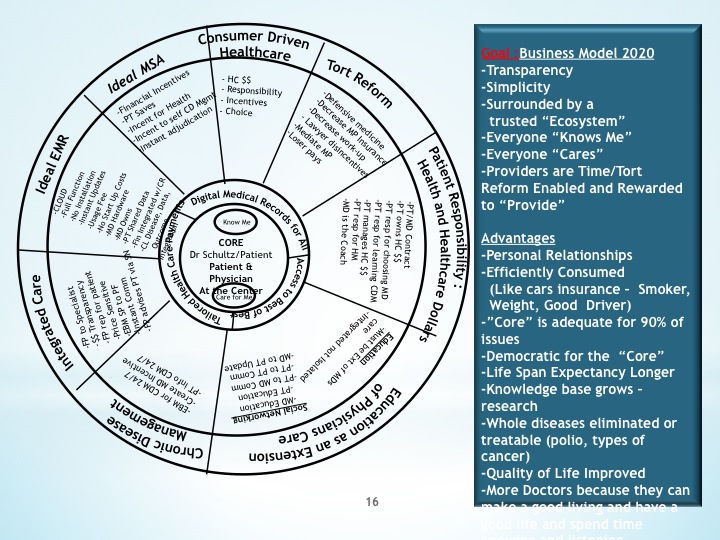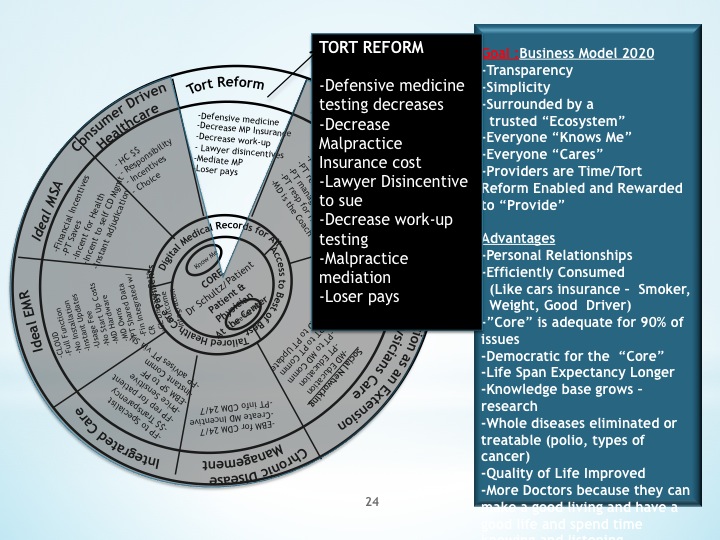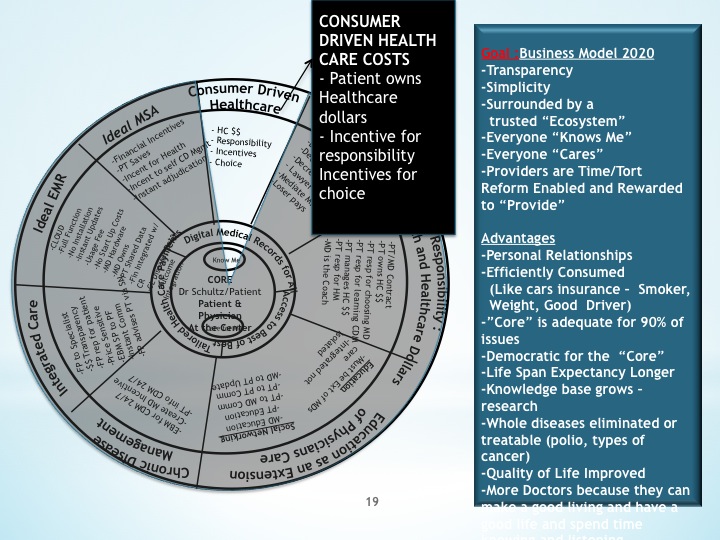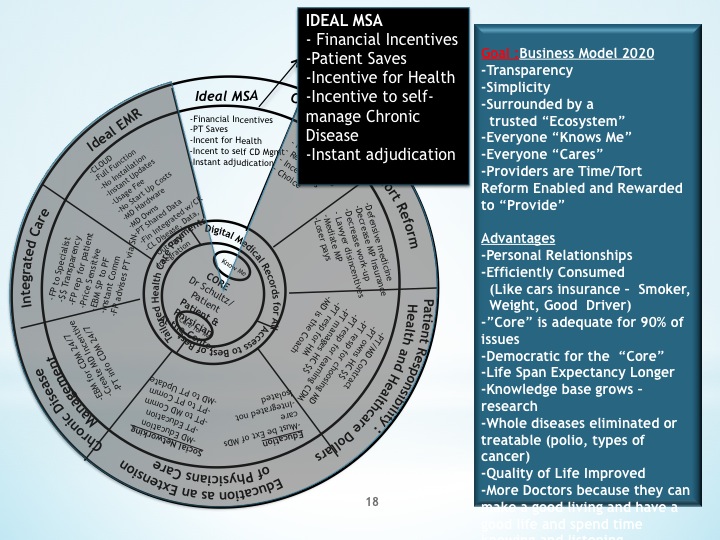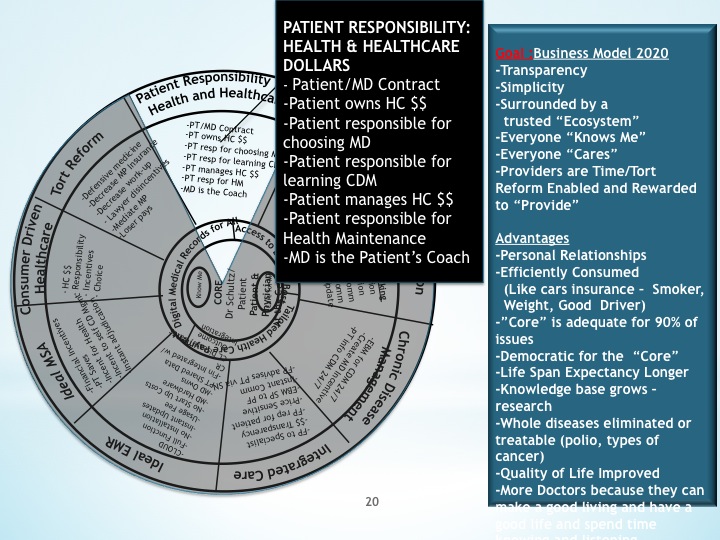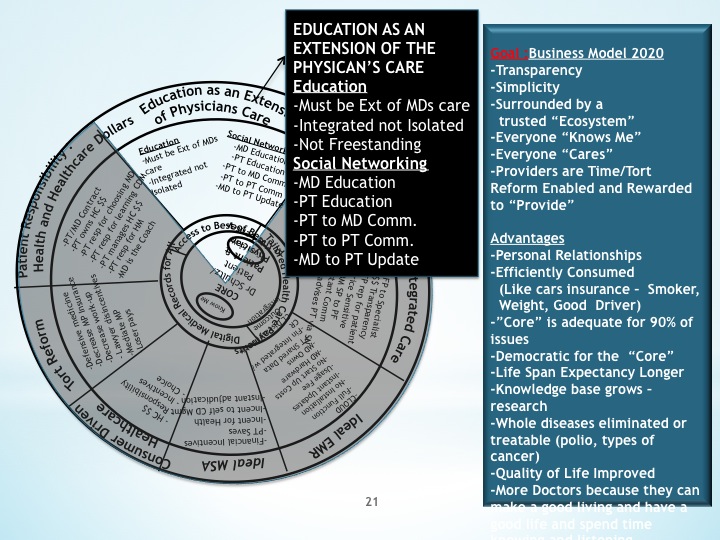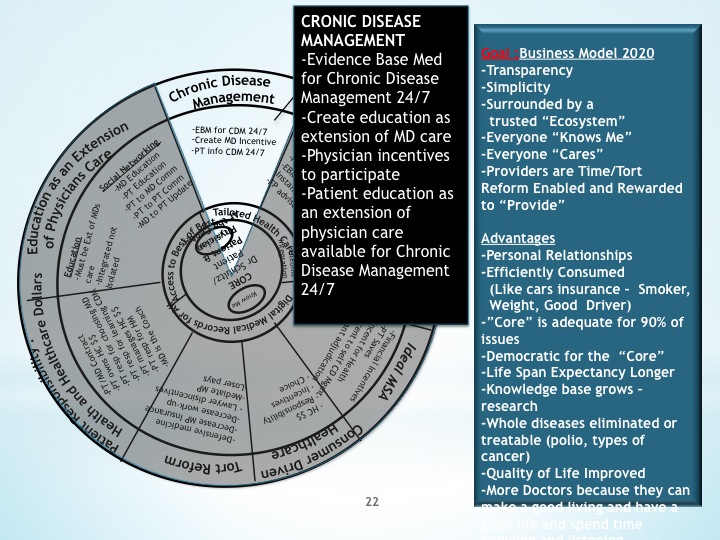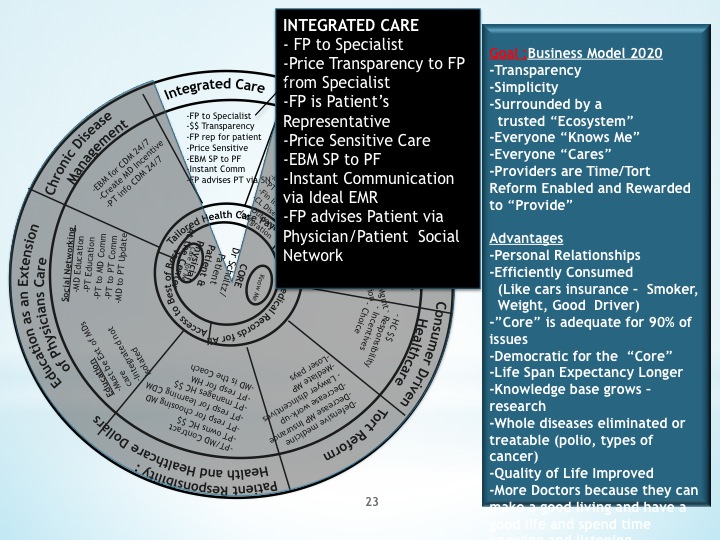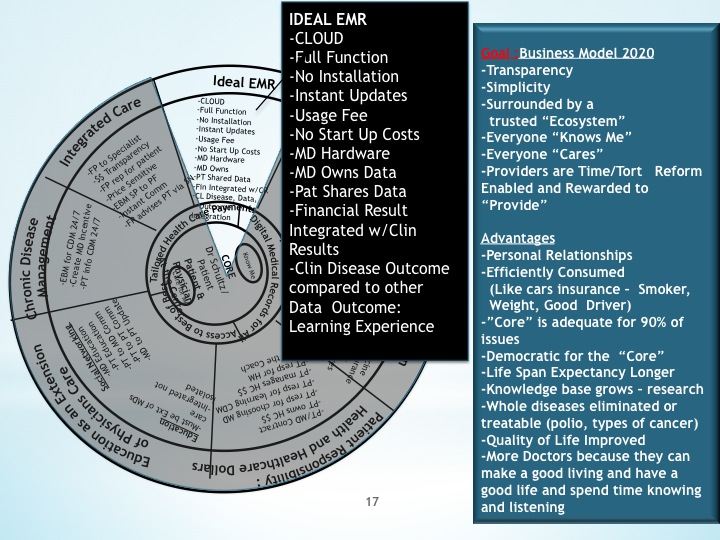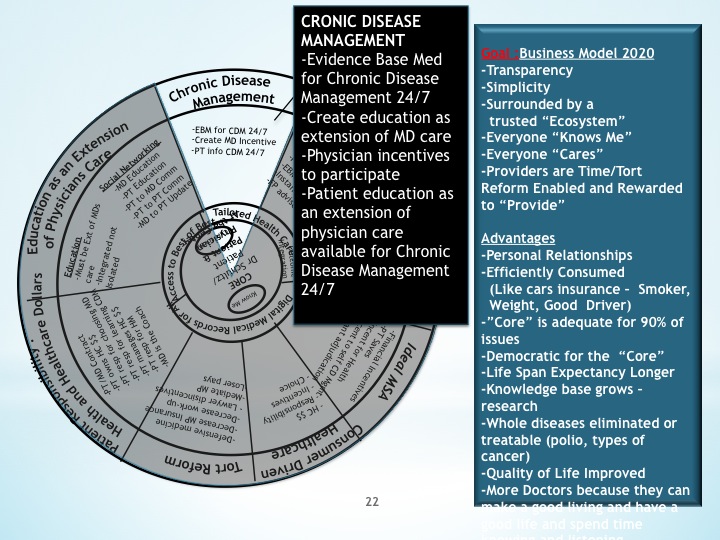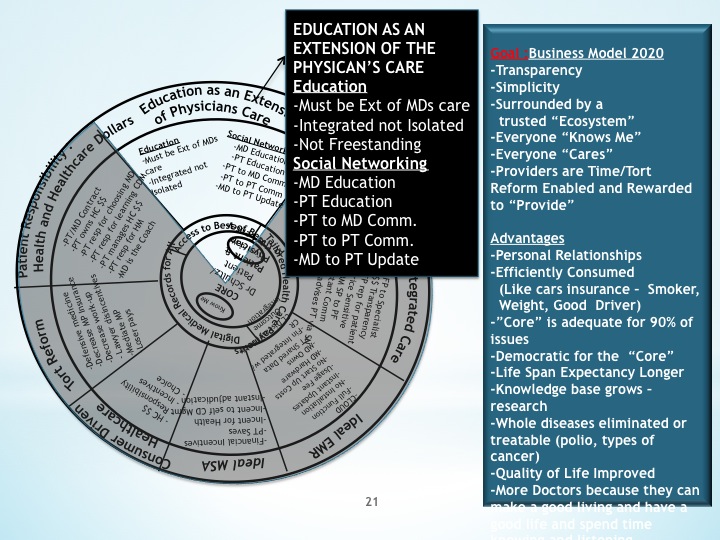How Are Accountable Care Organizations (ACOs) Doing?
Stanley Feld M.D.,
FACP, MACE
In a word the formation
of Accountable Care Organizations is doing poorly.
If one believes the CMS
press releases one would believe the formation of ACOs is doing well.
In the past, I have gone
into great detail on why I believe Accountable Care Organizations will fail.
I believe physicians and
hospital systems should be accountable for outcomes but only the outcomes they
can control.
They should not be
accountable for outcomes they cannot control.
ACOs are really HMOs on
steroids. Risk is transferred from the government to the healthcare providers.
HMOs failed in the 1980’s
and 1990’s because physicians and hospital systems realized that they could not
evaluate risk or manage risk.
It is impossible for
providers (physicians or hospital systems) to control patients’ behavior in
adhering to treatment for their disease.
It is almost impossible for
the government to commoditize reimbursement accurately for diseases unless the
government can weigh the risk of poor disease outcomes.
No one has figured out
the way to accurately risk weight the outcome of a patient’s disease and
treatment.
CMS believes by
increasing the number of codes in ICD-10 to 68,000 codes vs. ICM-9 18,00 codes, the old coding system, the
government will be able to weigh risk leading to accurate cost assessment.
I believe this is a
fantasy of healthcare policy wonks working for the Obama administration.
Many physician groups
and hospital systems believe they will lose money taking on these risks. These
are the groups that are holding back and not forming ACOs.
It is the reason the
Mayo Clinic and the Cleveland Clinic have refused to form ACOs.
Nevertheless on January 1st CMS proudly announced that
it has nearly doubled the number of ACO programs in the country by adding 106
new ACOs to the existing 148 programs for a total of 254 programs to date.
The CMS announced its latest and
largest round of accountable care organizations under the Medicare
shared-savings program.
I would not be as proud as CMS is to applaud this level of
participation in the ACO program. ACOs are the keystone of Obamacare.
Complete national participation is supposed to occur by January
2014.
There are a total of 254 ACO’s signed up in 50 states or 5.08 ACO’s
per state. There are many more potential
ACOs per state than 5.08 per state.
“CMS said half of ACOs are physician-led and
care for less than 10,000 Medicare enrollees.”
This is not a good sign.
The success of the ACO program is defined as shifting the risk of medical care to
hospital systems and physicians.
What is the problem?
The problem is obvious.
The definition of insurance is,
“Insurance is the
equitable transfer of the risk of a loss, from one entity to another in
exchange for payment. It is a form of risk management
primarily used to hedge against the
risk of a contingent, uncertain loss.”
“An insurer, or insurance carrier, is a company selling the
insurance; the insured, or policyholder, is the person or entity buying the
insurance policy. The amount to be charged for a certain amount of insurance
coverage is called the premium.
“Risk management,
the practice of appraising and controlling risk, has evolved as a discrete field of
study and practice.”
Risk management is far
from an exact science. Risk management depends on a large number of people
paying premiums who are not at risk for disease.
Obamacare’s goal is to
have all the low risk consumers pay for the higher risk consumers.
However, President Obama
has provided low risk consumers an out. The penalty for not participating is
modest compare to the cost of the insurance. If a low risk consumer gets sick
he can immediately join the health insurance exchange program without
restrictions.
The increased cost of
illness is compounded when a large number of patients have chronic diseases.
A contributing factor to
developing chronic disease is obesity.
America has a national
obesity epidemic.
Patients with Diabetes
Mellitus are vulnerable to multiple diseases such as hypertension,
hyperlipidemia, kidney disease, eye disease and vascular disease.
Each might be at a
different stage of progression. The risk for costly complications is different
for each at each stage of disease progression.
The diabetic might or
might not adhere to the treatment regime outlined. It is difficult to risk
weight these patients. It is risky to take the responsibility for the medical
care outcomes for these patients.
In reality the principle
risk managers are consumers.
Healthcare policy
experts have not practiced medicine. They either do not understand these risks
or they want to place the risk with physicians and hospital systems and provide
undervalued reward.
Many medical outcomes are
dependent on patient responsibility for managing their own risk. Patients must
participate in their own care to receive maximum benefit and the best medical outcomes.
Patients must become
professors of their disease.
There are many reasons ACOs will fail
1. ACOs
do not empower consumers to be responsible for their own medical care.
Healthcare should be consumer driven with consumers controlling their healthcare
dollars. They will then make informed choices about their care and insurance
coverage.
2. ACOs create artificial
incentives to improve quality medical care and provider performance.
3. Consumer driven healthcare creates real
incentives to promote price competition by physicians and hospital systems. True
competitors will constantly work to improve their products, attract
consumers, and ultimately increase market share.
In a systems of ACOs consumers do
not play a role in stimulating completion. Consumers are passive recipients of
treatment from an assigned ACO.
4. Most physicians are reluctant
to assume accountability for patient outcomes. Physicians recognize that
most medical outcomes are directly under consumers behavioral control.
5. ACOs structure does not include consumers’
incentive to be responsible or accountable for their own medical care.
ACOs undermine any attempt to create a truly
accountable healthcare system that can drive down medical costs.
6. ACOs do not encourage provider
accountability. ACO’s shared savings incentive
does not seem to be adequate for the risk assumption.
Providers will continue to
be paid for each service they perform until the government provided
funds run out for that ACO.
7. There are also grave uncertainties and
practical complications of distributing government funds and savings if any
between the hospital system and physicians on the hospital systems staff.
8. ACOs create an
unfair competitive advantage for large organizations that are hospital system centric.
Eligibility requirements are vague and ambiguous. The eligibility
requirements suggest that larger organizations have an unspoken
eligibility advantage.
9. This is the reason
hospital systems are trying to form ACOs. Hospital systems think they will make
money. I believe hospital systems will lose money. The government will have to
supplement payment for hospital systems to stay afloat.
10. When hospital systems lose
money they will fight with their staff physicians over the distribution of
government reimbursement.
The cost of hospital services will then
skyrocket further. Consumers will be the losers.
11. Groups of independent
practitioners as well as other types of small and mid-sized practices may
lack the infrastructure, information technology facilities, or other resources
needed to qualify for ACO eligibility.
12. They will be forced to join hospital systems.
Hospital systems have a long history of taking advantage of physicians
skills and intellectual property.
Tension between hospital systems and staff
physicians will be created. Hospital systems’ ACOs will crumble. The cost of
medical care will continue to increase further.
These are just a few of the reasons ACO’s will fail.
No matter how hard CMS tries to change the narrative
these are some of the reasons explaining the lack of hospital and physician participation
to this point.
The opinions expressed in the blog “Repairing The Healthcare System” are, mine and mine alone.
